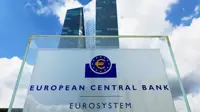India’s growth unlikely to top 6.5% over 5 years: Crisil
22 Apr 2014
While India's economy is likely to grow faster than the current rate over the next five years, the growth will be nowhere near the nine per cent of the halcyon years between 2004 and 2008, according to a report by market research firm Crisil.
There is a 50-per cent chance growth will average 6.5 per cent over this period, provided there is a decisive mandate in the ongoing general elections, which will hopefully speed up decision making and improve the investment climate and competitive efficiencies, it said.
''If everything falls into place - which, to us, has one-in-five odds - growth could rise much above 6.5 per cent,'' the report titled 'Of growth & missed opportunity' added.
The difference between a 6.5 per cent a 9-9.5 per cent growth is huge – it means 49 million less people below the poverty line over a five-year period. It translates into an increase of Rs2 lakh in the nominal household income, 10 million more two-wheelers sold, 2 million more cars, 96,000 new homes in 10 major cities, the report points out.
But if India misses a decisive mandate or a viable coalition, a sustainable lift to growth won't materialise. ''The odds of being caught in the five per cent rut (in such a scenario) rise to around one in three,'' it said.
Positive impulses in the next five years will come from some improvement in investment, more so in its efficiency. But these won't rebound to the levels seen in fiscals 2004-2011, the research report said.
India's journey towards inclusive development is getting longer and more tiresome, and unless the potholes of policy stasis are paved in double-quick time, the aspirations of more than a generation will take a hit, it opined.
Apart from limited upside to productivity improvement over the next five years, what will hinder a return to the nine per cent growth path is the fact that other underlying factors, which once favoured high growth, are not as supportive as they were in the high-growth period.
One reason is the global economy expanding at relatively slower pace and therefore, the push to exports will be less strong.
India's export growth was almost 25 per cent above average between 2004 and 2008, led by a rapidly expanding information technology services sector, refined petroleum exports as well as manufacturing exports which were supported by domestic capacity expansion.
But in recent years, failure to address structural issues such as rising wage costs, lack of economies of scale and high domestic inflation have lowered India's export competitiveness vis-à-vis peers and limited the upside to growth.
Even 6.5 per cent growth won't help much since, according to Crisil, this will generate at best 37 million new non-farm jobs. This means around 14 million persons will have to remain either unemployed or get underemployed in agriculture, as the workforce will increase by around 51 million over the next five years.









.webp)














